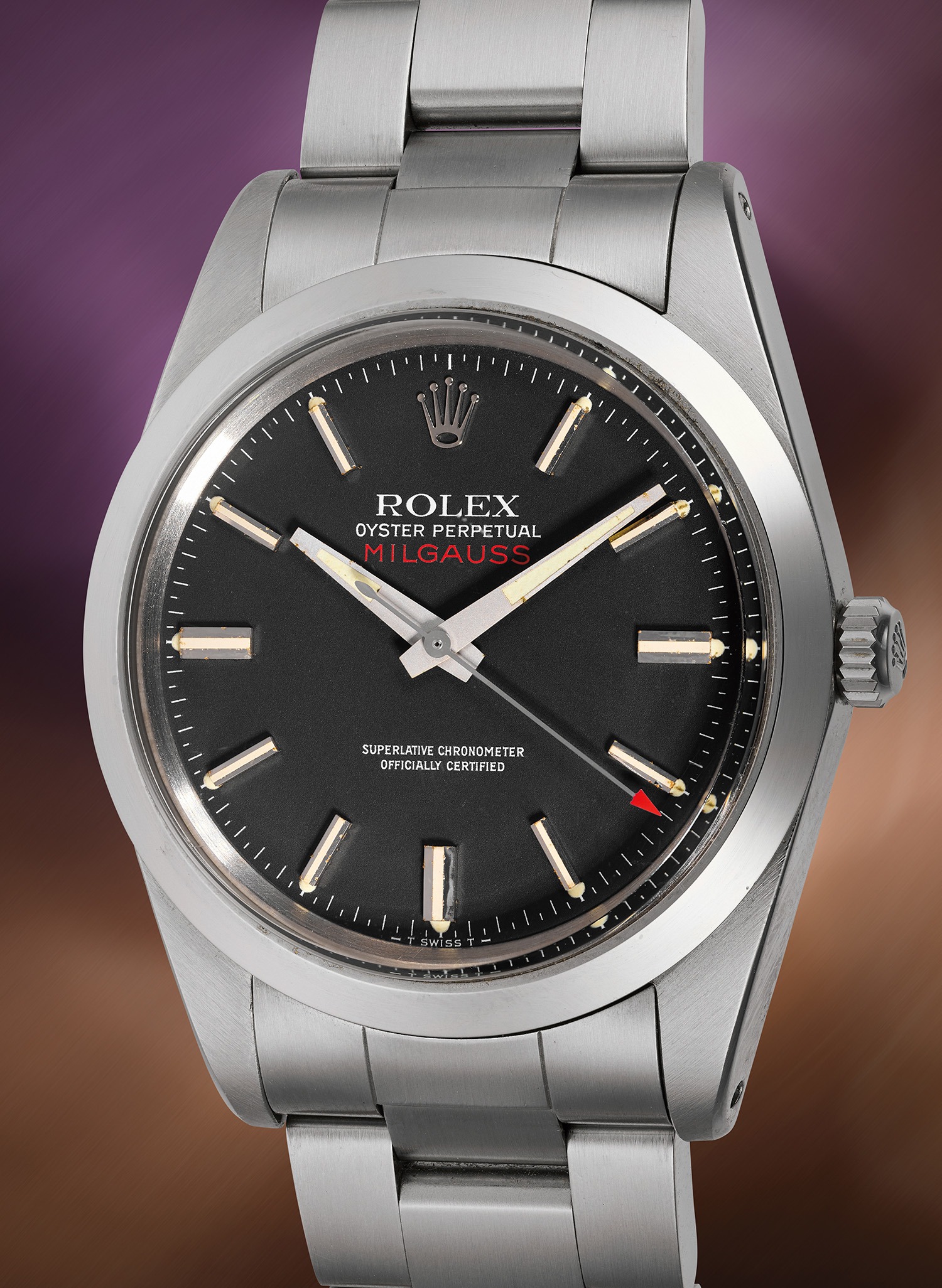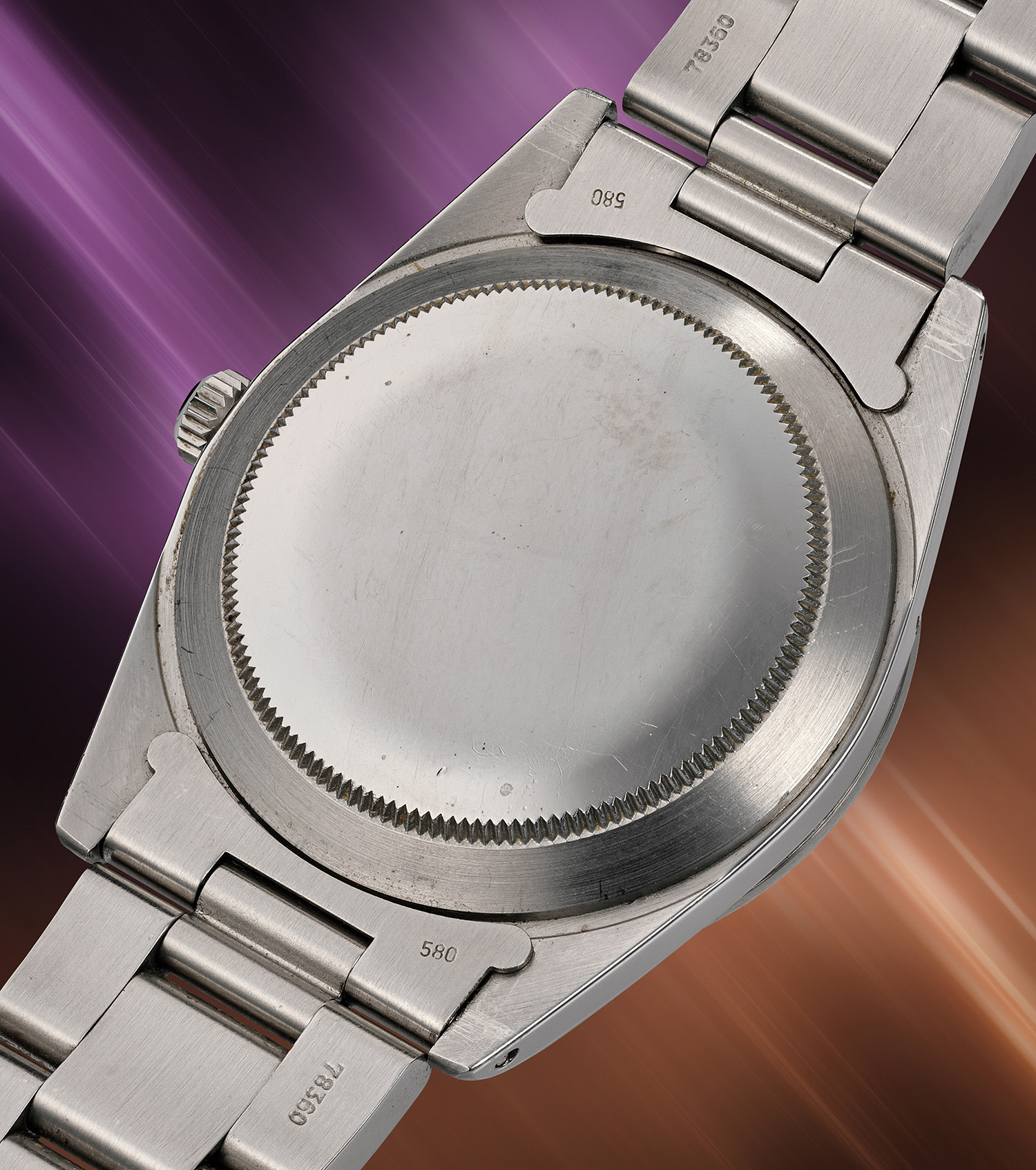



118
Rolex
Ref. 1019
Milgauss
A highly rare and well-preserved antimagnetic stainless steel wristwatch with center seconds and bracelet
Full-Cataloguing
The result was the Milgauss, deriving its name from the Latin “mille” meaning a thousand, and “Gauss” representing the unit measure for magnetism. Accordingly, it could withstand exposure of up to 1000 Gauss with no effect on accuracy, whereas a typical watch movement can only withstand up to 70-90 Gauss. In the early 1960s, the newly introduced Rolex Milgauss reference 1019, like the present lot, replaced the original two versions: references 6541 and 6543. Significantly thinner than its predecessors, it was manufactured until 1990 and was available only in stainless steel.
An extremely niche tool watch, the Milgauss was never a commercial success and consequently production numbers were low. The present watch is fitted with a flawless, black matte dial that permits the desirable red “Milgauss” text at 12 o’clock to stand out. Furthermore, the present watch is preserved in outstanding condition with sharp bevels and crisp edges. Furthermore, the luminous material on the hands and hour markers are all original, having aged evenly to a wonderful ivory tone.
Rolex
Swiss | 1905Founded in 1905 England by Hans Wilsdorf and Alfred Davis as Wilsdorf & Davis, it soon became known as the Rolex Watch Company in 1915, moving its headquarters to Geneva in 1919. Like no other company, the success of the wristwatch can be attributed to many of Rolex's innovations that made them one of the most respected and well-known of all luxury brands. These innovations include their famous "Oyster" case — the world's first water resistant and dustproof watch case, invented in 1926 — and their "Perpetual" — the first reliable self-winding movement for wristwatches launched in 1933. They would form the foundation for Rolex's Datejust and Day-Date, respectively introduced in 1945 and 1956, but also importantly for their sports watches, such as the Explorer, Submariner and GMT-Master launched in the mid-1950s.
One of its most famous models is the Cosmograph Daytona. Launched in 1963, these chronographs are without any doubt amongst the most iconic and coveted of all collectible wristwatches. Other key collectible models include their most complicated vintage watches, including references 8171 and 6062 with triple calendar and moon phase, "Jean Claude Killy" triple date chronograph models and the Submariner, including early "big-crown" models and military-issued variants.